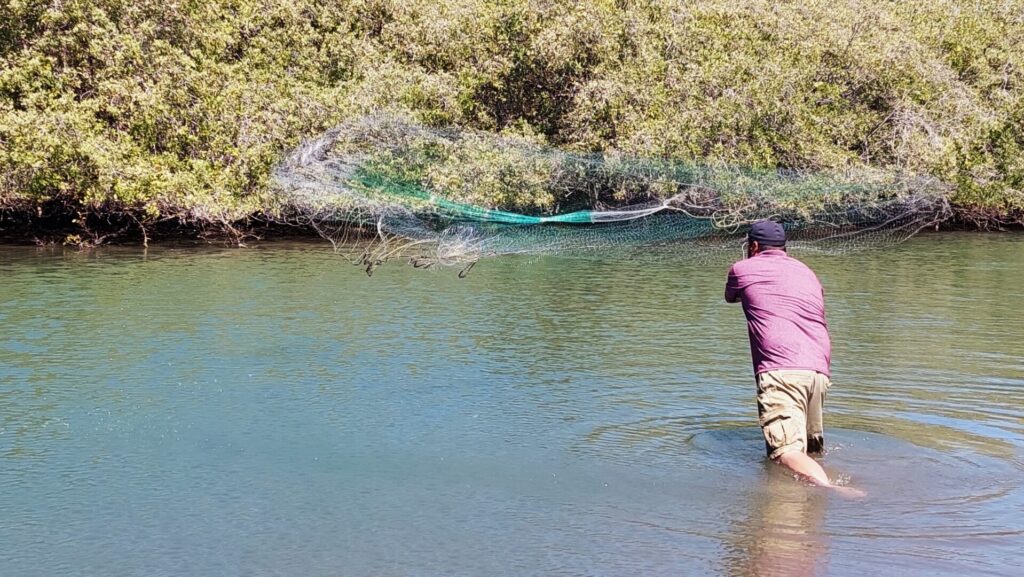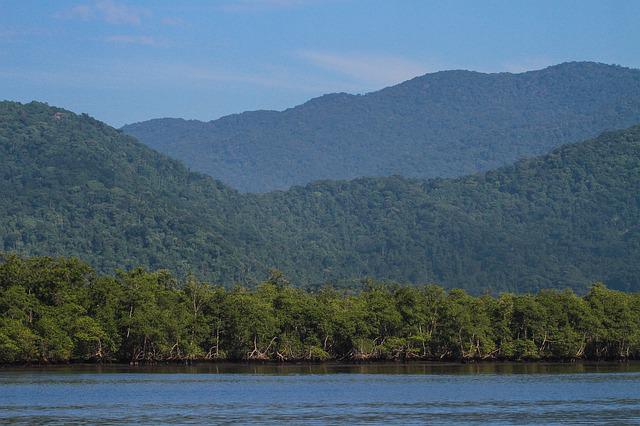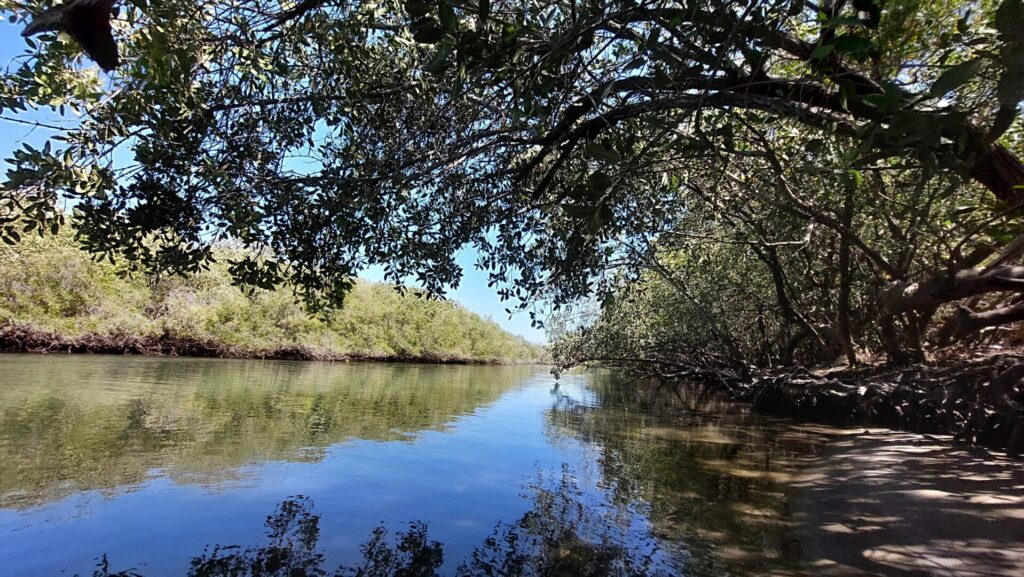If you have not traveled by boat through the canals, marshes, lagoons and estuaries surrounded by mangroves, you are missing a unique experience, because of the beauty of these sites, which are also home to many marine species and birds.
In an analysis published in This CountryMercedes Marlenne Manzano Sarabia, researcher at the Faculty of Marine Sciences of the Autonomous University of Sinaloa, and Lorenzo Rosenweig, from Terra Habitus A. C., emphasize that Mexico's coasts have an area of 900,000 hectares of mangroves, representing 6 percent of the world's coverage. C., emphasize that Mexico's coasts have an area of 900,000 hectares of mangroves, which represents 6 percent of the world's coverage.
Only Indonesia, Australia and Brazil have a larger area of this ecosystem than Mexico.
Mexico's mangroves, with an approximate area of 900,000 hectares, represent 6% of the world's mangrove cover and place Mexico in fourth place, with Indonesia, Australia and Brazil being the nations with the greatest extension of this ecosystem.
In the world more than 70 species have been reported, while in Mexico there are: Rhizophora mangle (red mangrove), Laguncularia racemosa (white mangrove), Avicennia germinans (black mangrove), the associated species Conocarpus erectus (buttonwood mangrove), as well as Avicennia bicolor (bicolor or salt mangrove) and Rhizophora harrisonii (caballero mangrove) which have a restricted distribution in Oaxaca and Chiapas.
Mangroves are distributed along almost all of Mexico's coasts, with the exception of the Pacific coast, in Baja California, the northern coast of Tamaulipas and some areas of Michoacán.
As for their distribution along our coasts, they are present on both coasts, with the exception of the Pacific coast of the state of Baja California, part of the northern coast of Tamaulipas and certain coastal areas of Michoacán where the topography does not favor their presence.
What is the value of the mangrove?
In the past, mangroves were considered worthless and unhealthy sites, but this perception is changing in the communities, where they recognize the function and services they provide, particularly in those that live around them.
Currently, methodologies are used to estimate the economic value of mangroves and it has been calculated, for example, that one hectare of mangrove in the Gulf of California can be attributed a flow, due to the fisheries it generates, of approximately 37,500 dollars per hectare per year (Aburto-Oropeza and collaborators, 2008).
"If we consider that this is an annual flow expressed in a monetary unit, we could estimate that the value of the mangrove as natural capital, with a discount rate of 6 percent, is 625 thousand dollars per hectare. In other words, the degradation or destruction of 100 hectares of this ecosystem in Baja California Sur impoverishes all Mexicans by reducing the value of our natural heritage by 62.5 million dollars. A similar exercise for the Gulf of Mexico or the Caribbean Sea would yield a figure perhaps higher", refers the analysis.
However, due to human activities such as urban development, changes in land use for tourism, aquaculture, agriculture, livestock, among others, as well as natural events such as hurricanes, frost, extreme rains, droughts and pests, the annual loss rate of this ecosystem in Mexico is close to 2 percent.

An ecosystem that provides multiple benefits
The exotic beauty of mangroves is only one reason why this ecosystem that provides shelter and food for countless species should be protected. The importance goes far beyond aesthetics.
Mangroves play a key role for artisanal subsistence and commercial fishing in general. Several species carry out part of their life cycle in these sites, an example of which are shrimp, since most of them enter the coastal lagoons at an early stage, finding shelter and food, until they migrate to open waters. The shrimp fishery in particular is one of the main fisheries in Mexico, where many communities benefit from this provisioning service. The same happens with commercial scale species such as snappers, jacks and groupers, which use the shelter of the mangroves during their youth to later go to sea.

Mangrove honey production is another service provided by these coastal ecosystems. Mangrove honey is an organic product that is widely consumed in the country and has been attributed several health benefits. Several projects are currently being carried out in Mexico in mangroves and adjacent areas to produce honey. One example is the Programa de Conservación para el Desarrollo Sostenible (Procodes) project of the Comisión de Áreas Naturales Protegidas (Conanp), whose beneficiary is the Ejido Laureles, Nayarit, or the "Mieles Mesoamericanas" project carried out by Ecosur.
A third example of service provision is related to the pharmaceutical field. In the coastal lagoons where mangroves are found, there are also different species of macroalgae, some of which have reported activities of the antimutagenic type (preventing changes in the DNA of cells), antioxidant (substances that prevent or delay damage to cells) and antiproliferative (preventing cell reproduction, particularly of cancer cells), with a potential use to be employed as sources of compounds for the development of new anticancer drugs (Osuna-Ortíz et al., 2016).
An important regulating service is the protection that mangroves provide during tropical storms and hurricanes, since they serve as a buffer for the coastal zone in the face of intense waves, reducing the risk of flooding.
In addition, mangroves are a carbon sink, that is, this vegetation contributes to the capture and storage of CO2 from the atmosphere, one of the main greenhouse gases that contribute to global warming. Different investigations have concluded that this storage capacity is up to four or five times greater compared to other tropical forests.
Manzano and Rosenweig state that the challenges for mangrove conservation in Mexico are numerous.
"The possible loss of their ecosystem services confronts us with important challenges that must be addressed and prioritized. In terms of the impact on our mangroves, the change in land use due to tourism and real estate developments and port and industrial infrastructure works are the main source of deterioration of these coastal ecosystems".

From a pollution perspective, mangroves are very vulnerable. Since they are located in the lower watershed at the mouth of riparian corridors and the land-marine transition zone, they end up being areas of concentration of pollutants. An example of this is plastics, which eventually degrade in size. Fragments smaller than 5 mm are considered microplastics. These, when consumed by fish, mollusks and crustaceans found in mangroves, can in turn affect human health, particularly coastal populations whose diet is linked to these fishery resources.
Our cities, and the priorities of their inhabitants, are so far removed from these complex and magnificent networks of coastal productivity that it is difficult to argue for the imperative need to care for them. They are, however, like our forests, jungles, deserts, grasslands and bodies of water, one of the many essential pieces in maintaining the dream of a competitive, resilient and forward-looking nation.
INTERESTING FACTS ABOUT MANGROVES
- Mexico has an area of 900 thousand hectares of mangrove.
- The value of mangroves as natural capital is estimated at US$625,000 per hectare.
- Mangroves play a key role for artisanal subsistence and commercial fishing in general.
- Mangroves contribute to the capture and storage of CO2 from the atmosphere.


